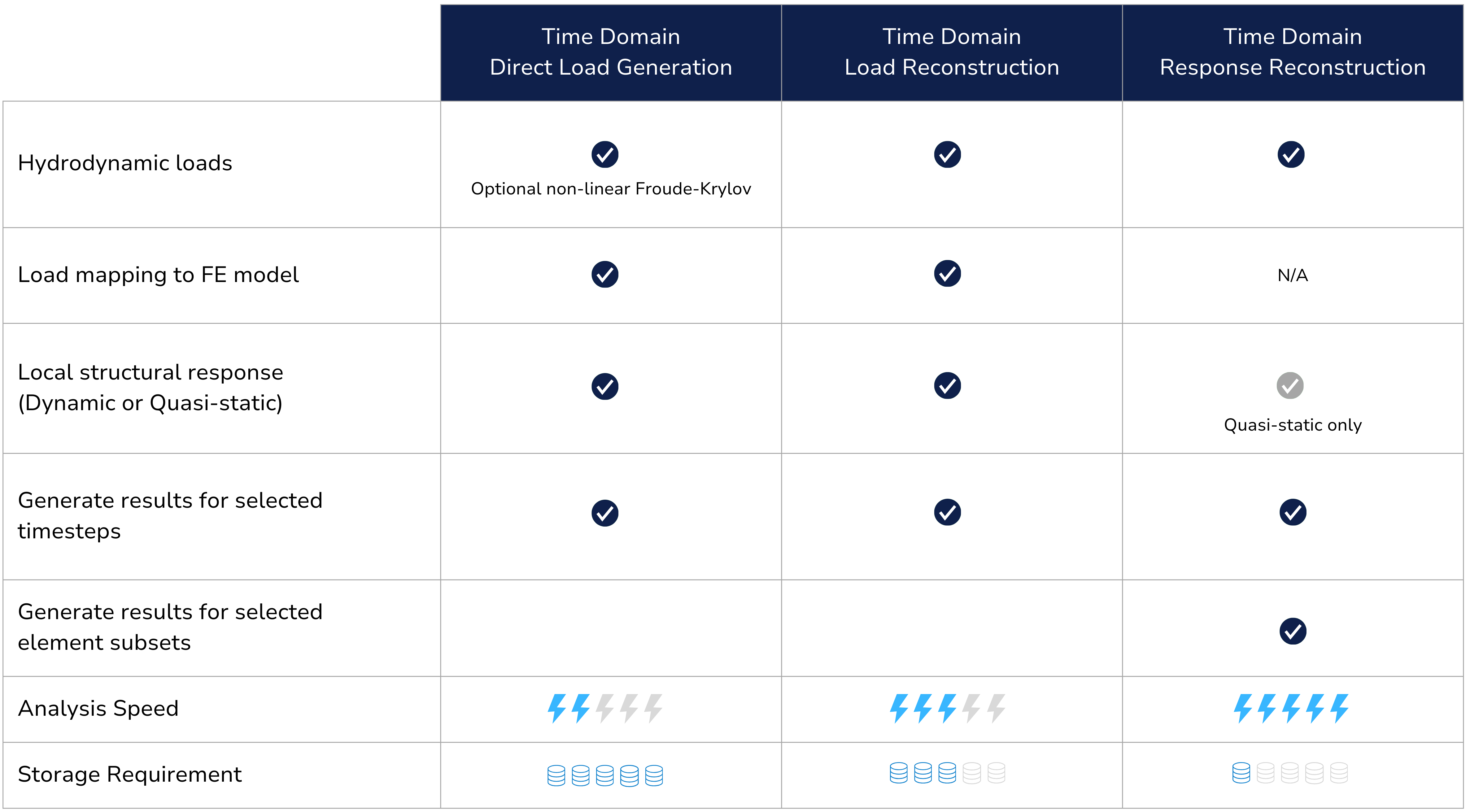Time domain analysis for floating offshore wind substructure design
The expansion of the offshore wind industry to deeper water depths requires the usage of floating wind support structures, bringing new challenges to the industry.
As the offshore wind support structures get more complex, computational models quickly become larger and more expensive. Now, more than ever, selecting the right methodology that matches the requirements of the design phase is crucial to guarantee the right balance between accuracy and computational cost.
For early design stages, the application of frequency domain methods is being investigated and used by the industry and academia. However, from the (pre)FEED stage onwards, time domain methods are required, to capture the coupled effects of wind, wave and mooring and to satisfy industry standards.
The traditional direct time domain simulation of the detailed structure response may become very time-consuming. Often, simulations of hundreds or thousands of design load cases are required, and thus the associated computational cost becomes considerable. Fortunately, this computational challenge can be overcome in several ways, depending on properties of the particular asset under consideration and the desired level of accuracy for the relevant design phase.
DNV meets industry demands with different methodologies for time domain analysis, balancing flexibility, accuracy, and computational performance:
- Time Domain Direct Load Generation method: This is the most general method where hydrodynamic pressure and Morison loads are generated directly in the time domain before they are mapped to a structural Finite Element model. The computational cost may be reduced, especially for ULS, by limiting the simulation to time intervals around likely critical events.
- Time Domain Load Reconstruction method: This method is an evolution of the Direct Load Generation method and can be used to drastically reduce the computational cost associated with hydrodynamic load generation. Instead of directly computing hydrodynamic pressure in the time domain, the pressure is reconstructed based on precomputed unit-wave (diffracted) and unit-motion (radiated) pressure components with the waves and motions from a coupled analysis.
- Time Domain Response Reconstruction method: This method utilises the same fundamental methodology as the Load Reconstruction method, but instead of reconstructing hydrodynamic loads, it reconstructs the structure response itself. The reconstruction utilises precomputed responses for unit nodal loads, unit line loads, unit motion components and unit wave components. These individual contributions are scaled according to outputs from a coupled analysis and combined. No separate load generation or structural analysis is necessary. This method is the fastest and may reduce the simulation time from hours for direct simulation to just a few minutes.
All time domain methods listed above include post-processing capabilities for fatigue analysis (FLS) and ultimate limit state analysis (ULS). For FLS, quick screening methods are included to determine the critical locations in the model, which can then be analysed further with the (multi-directional) detailed hotspot fatigue checks based on rainflow counting according to DNV-RP-C203. For ULS, time domain buckling checks are included according to DNV-RP-C201.

Comparison table of time domain methods


